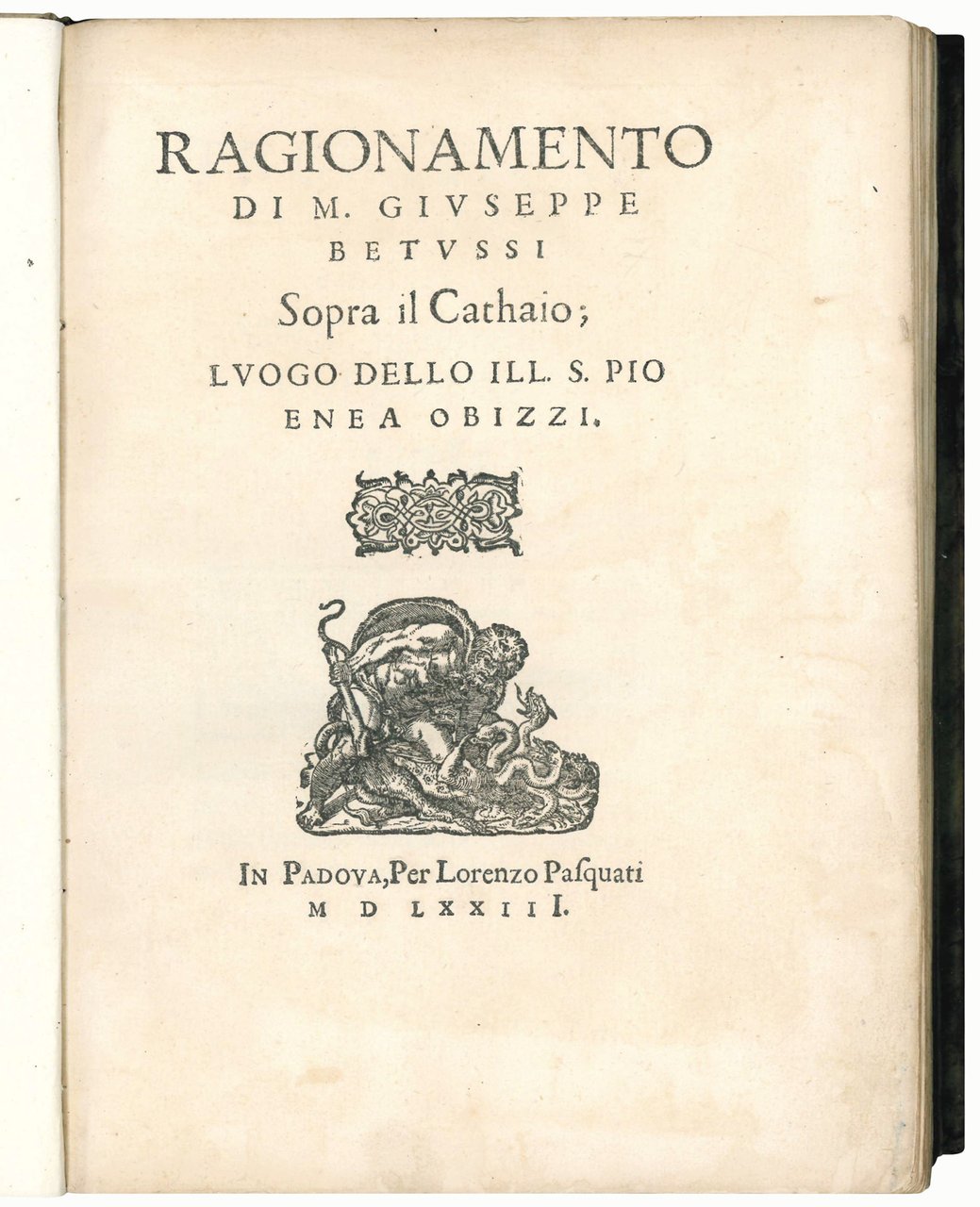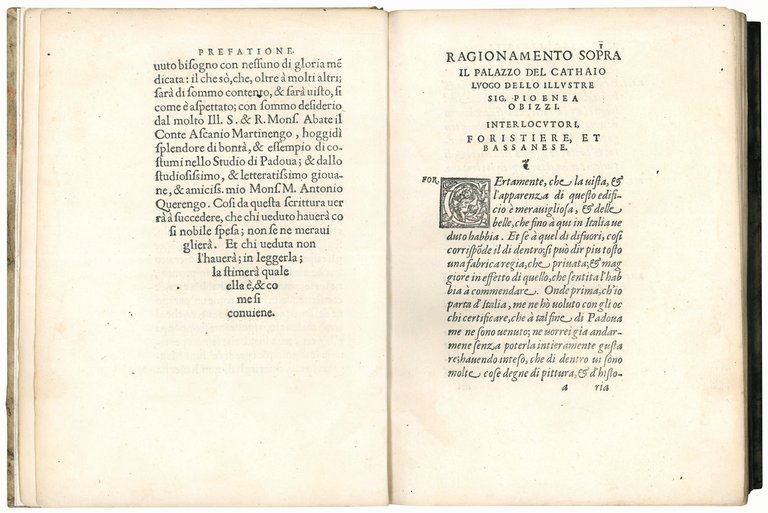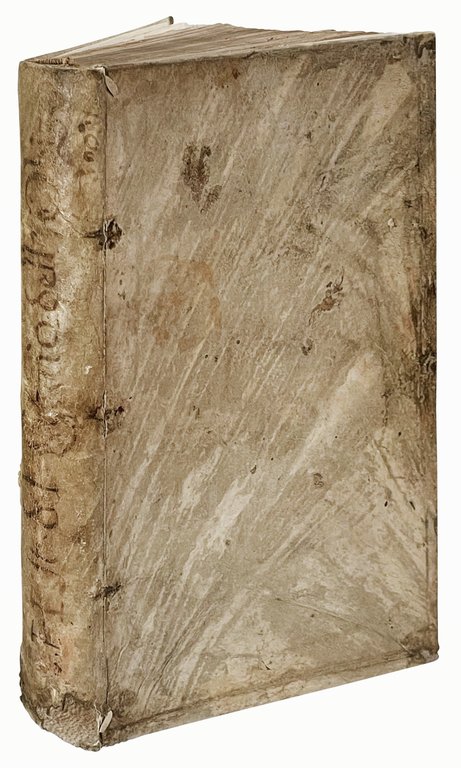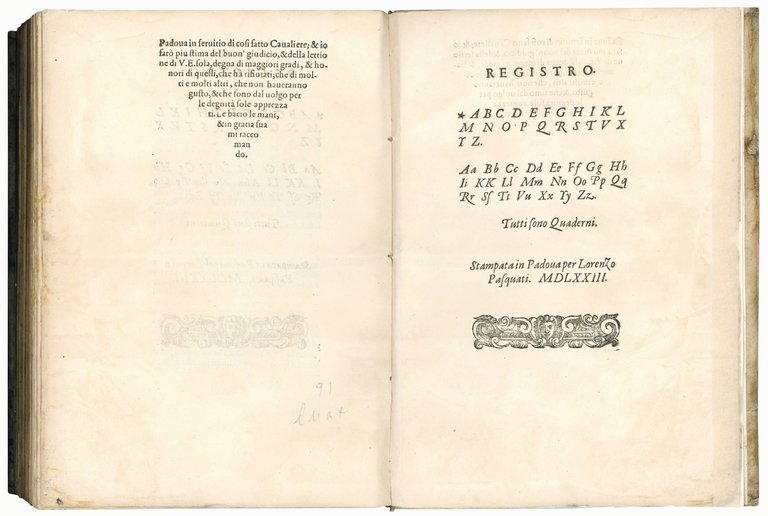




Rare and modern books
BETUSSI, Giuseppe (ca. 1512-1573)
Ragionamento di M. Giuseppe Betussi sopra il Cathaio; luogo dello Ill. S. Pio Enea Obizzi
[Cristoforo Griffio] for Lorenzo Pasquati, 1573
2200.00 €
Govi Libreria Antiquaria
(Modena, Italy)
The correct shipping costs are calculated once the shipping address is entered during order creation. One or more delivery methods are available at the Seller's own discretion: Standard, Express, Economy, In-store pick-up.
Bookshop shipping conditions:
For items priced over €300, it is possible to request an instalment plan from Maremagnum. Payment can be made with Carta del Docente, Carta della cultura giovani e del merito, Public Administration.
Delivery time is estimated according to the shipping time of the bookshop and the courier. In case of customs detention, delivery delays may occur. Any customs duties are charged to the recipient.
For more infoPayment methods
- PayPal
- Credit card
- Bank transfer
-
-
Find out how to use
your Carta del Docente -
Find out how to use
your Carta della cultura giovani e del merito
Details
Description
First edition (a second appeared in Ferrara in 1669). The Villa ‘Cathaio', located in Battaglia Terme on the road between Padua and Ferrara, was built between 1570 and 1573 by the architect Andrea della Valle at the behest of its owner, Pio Enea I degli Obizzi (1525-1588), and became a place of meeting and cultural exchange for scholars until the eighteenth century. In the present work, dedicated to Obizzi himself and written in the form of a dialogue, the author explains the construction of the villa and describes its architecture and garden, but above all he gives a detailed description of the art collections that were kept there and are now moslty preserved in Vienna.
Betussi met the Obizzi family, probably to gather information for his work on the most illustrious Italian families, just when the Marquis Pio Obizzi had completed the construction of his villa Il Cataio and was about to have its walls painted with frescoes celebrating the glory and success of his family. Pio Obizzi entrusted the work to Betussi, who reconstructed the history of the entire family and offered artistic subjects for painting, and to the Venetian painter Giambattista Zelotti, a pupil of Titian (C. Mutini, Betussi, Giuseppe, in: “Dizionario Biografico degli Italiani”, vol. 9, Rome, 1967, s.v.).
“È tuttavia nel Ragionamento sopra il Cathaio che si scopre la vocazione enciclopedica del Betussi e si riversano, con forti contaminazioni dei generi dell'ecfrasi (i ritratti all'antica, le “gesta dipinte”, l'impresa), i materiali verbali e iconici dell'allegoria, la tradizione degli exempla virtutis e le questioni del dibattito estetico, articolato in chiave interdisciplinare. Il Ragionamento è la descrizione in forma di dialogo lucianeo del programma storico-genealogico in quaranta quadri, commissionato al Betussi per la villa del Catajo (la ‘fabrica regia') dal signore padovano Pio Enea Obizzi, illustre uomo d'arme appartenente ad una delle famiglie di Terraferma fedeli alla Serenissima, che dalla metà del Cinquecento si insediano nei territori della ‘Santa Agricoltura'. Gli affreschi, eseguiti da Giovan Battista Zelotti, allievo veronese di Tiziano, rappresentano le forme di governo e le vicende delle maggiori famiglie italiane imparentate con gli Obizzi […] Nel Ragionamento è lo stesso Betussi a parlare di pittura come ‘favola' ancora nell'accezione boccacciana. Troviamo espressioni come ‘si come sotto coperta di ammaestramento, favoleggiarono gli antichi', ‘et si come narrano, sotto velame, le favole'. La cultura fabulosa del Boccaccio è impiegata a elogio della nobiltà veneta. Tra le allegorie ci sono per esempio il Tempo e la Verità, la Fama, legati alle vicende degli uomini illustri. Quest'ultima - avvisa Betussi citando da Boccaccio - non è il mostro falso e bugiardo descritto da Virgilio (poco consono al luogo) ma proprio la chiara fama che si acquista operando virtuosamente […] Se a villa Obizzi la pittura di storia si offre universalmente al piacere dell'occhio raffigurando eventi della storia romana, ma anche guerre e vittorie moderne della cristianità, nasconde pure sotto il velo significati accessibili solo ad un pubblico erudito (e cristiano) che conferiscono alla narrazione per immagini il valore del programma enciclopedico […] Il ciclo di affreschi riunisce pertanto - com'è tipico in numerose residenze nobiliari - il sapere filosofico-morale delle allegorie mitologiche e delle virtù dianoetiche dei governi, e il rac

